A plane is a tool that holds a blade at a fixed angle with an opening on its bottom for the blade to protrude. Used for millennia, all planes (those of our 18th century menuisier included) were made with wooden bodies before the 20th century. In the past century, plane bodies have been made of cast iron or steel. Planes fall into two categories: bench planes which are used for milling lumber and specialty planes which are made for specific tasks.
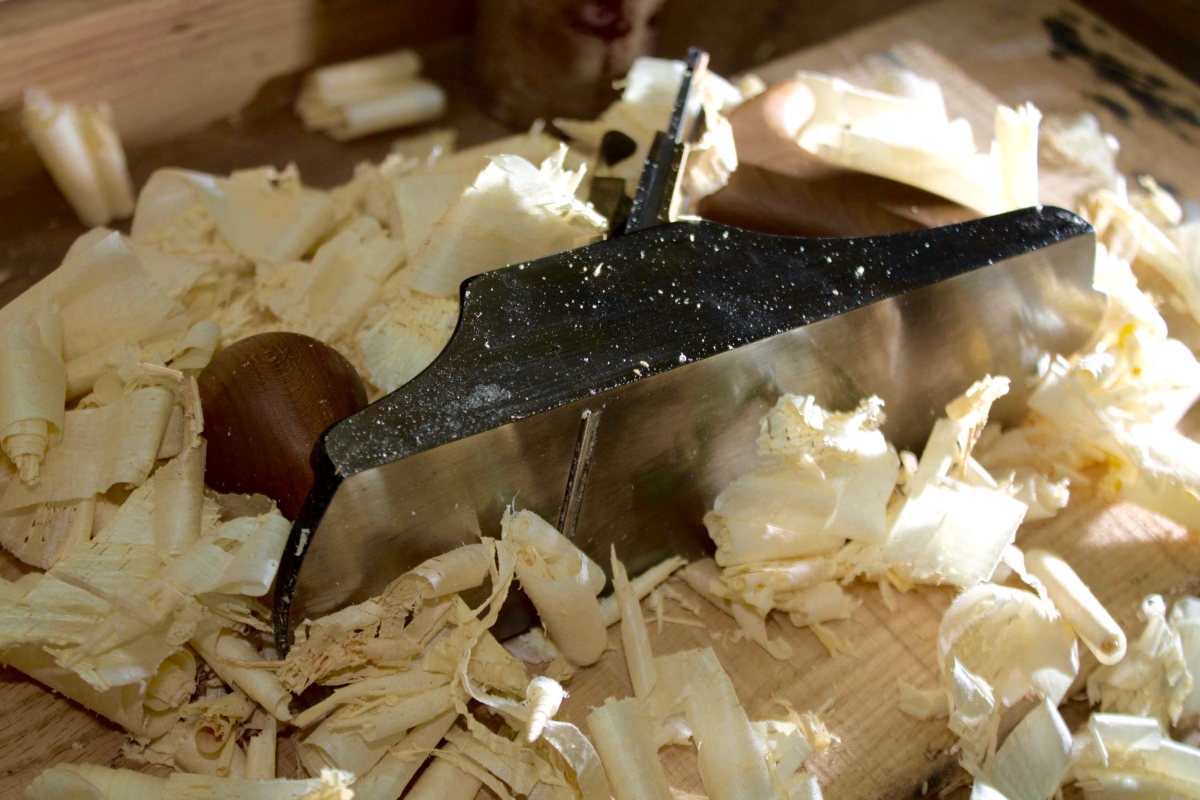
Photo: Avi Schwarzchild
The underside (sole) of a smoothing plane surrounded by the shavings that the tool produces. Note the opening for the protruding blade.
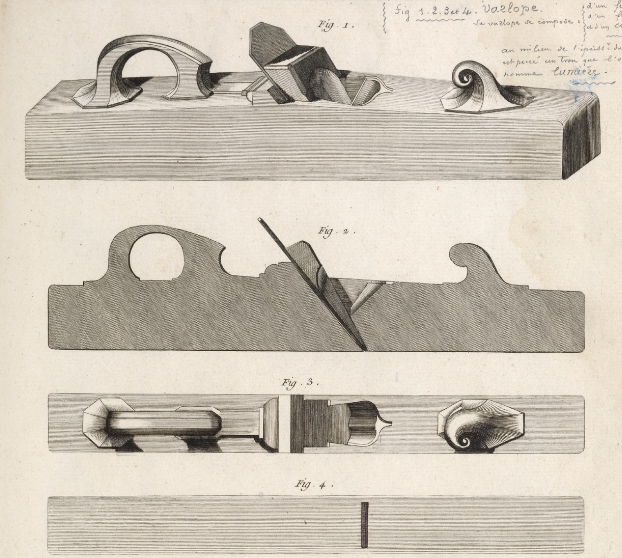
“Plate 13. Outils propres au coroyage du bois.” from L’Art du Menuiserie, wtr. Roubo, André Jacob engr. Laurent, Pierre. New York Public Library Digital Collections. Accessed December 13, 2016.
An engraving from Roubo depicting various views of a standard bench plane. Note the cross-section in figure 2: the blade is embedded into the plane’s body and held in place with a wedge. Modern planes have a mechanical system to hold the blade in place.
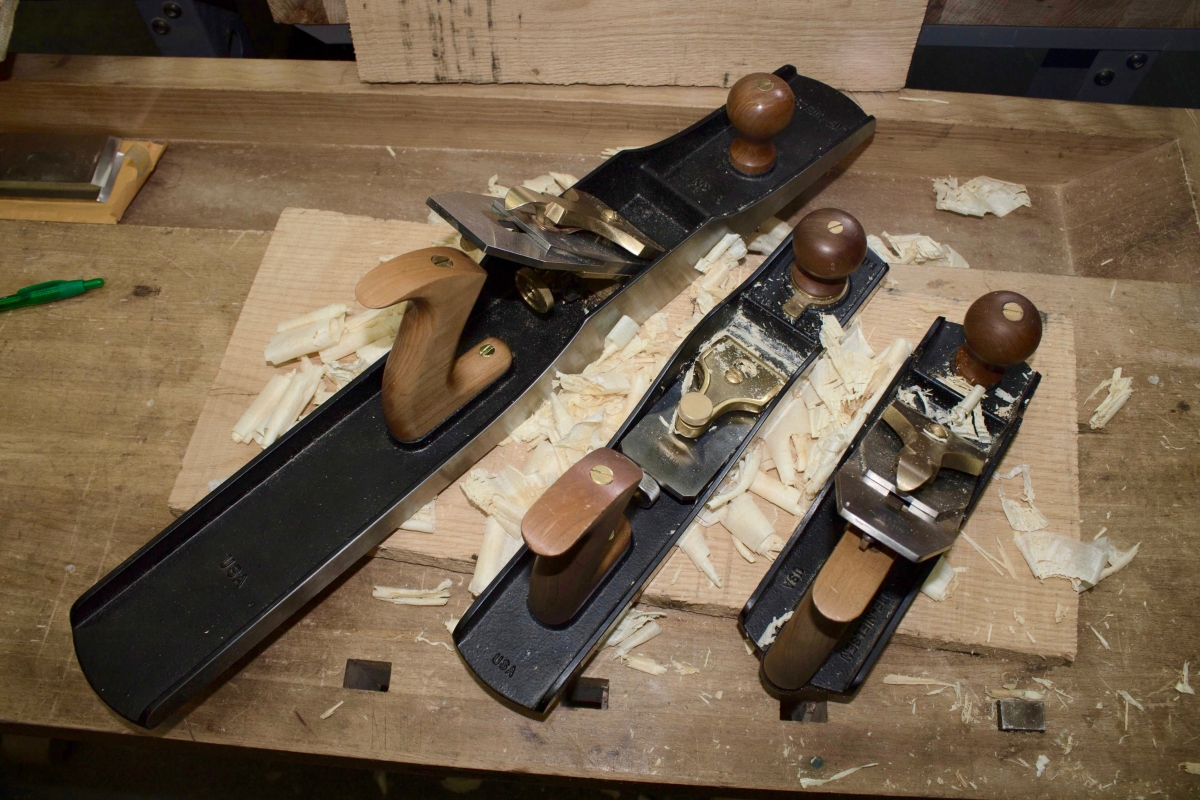
Photo: Avi Schwarzchild
The three standard bench planes arranged to show size. From left to right: jointer, jack, and smoothing planes.
Grooving Plane
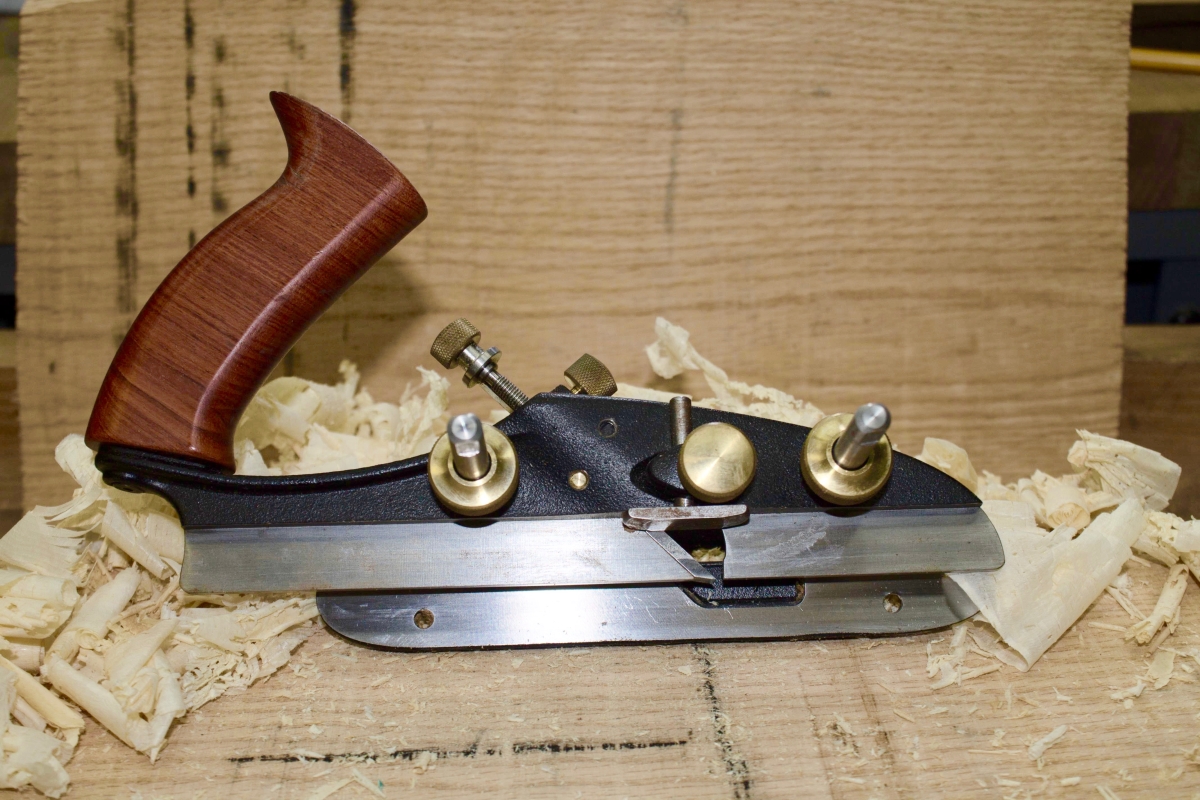
Photo: Avi Schwarzchild
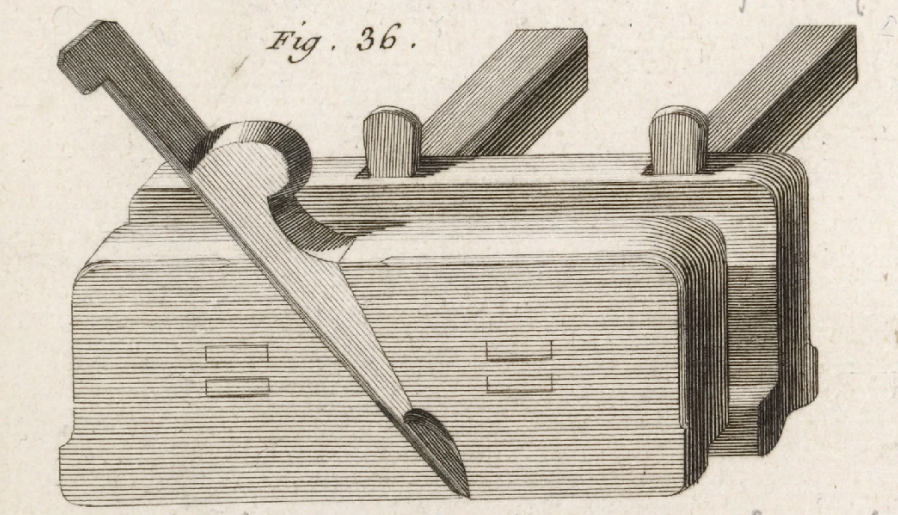
“Plate 16. Outils propres a faire les gorges et les ravallements.” from L’Art du Menuiserie, wtr. Roubo, André Jacob engr. Laurent, Pierre. New York Public Library Digital Collections. Accessed December 13, 2016.
A specialty plane with a narrow blade used for making grooves. Note the adjustable fence that allows the menuisier to control the indentation of the groove. Compare the modern grooving plane (upper) with Roubo’s (lower) and see that the design has hardly changed.
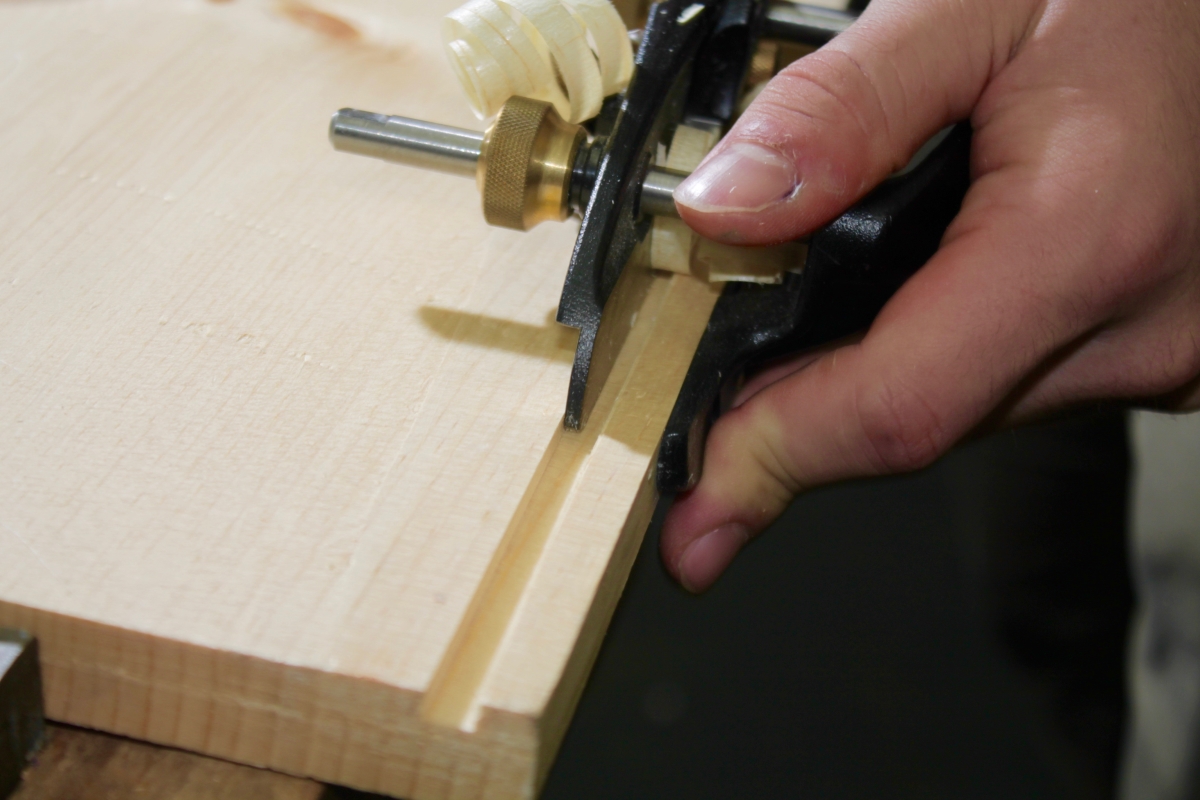
Photo: Avi Schwarzchild
A grooving plane in action.
Jack Plane
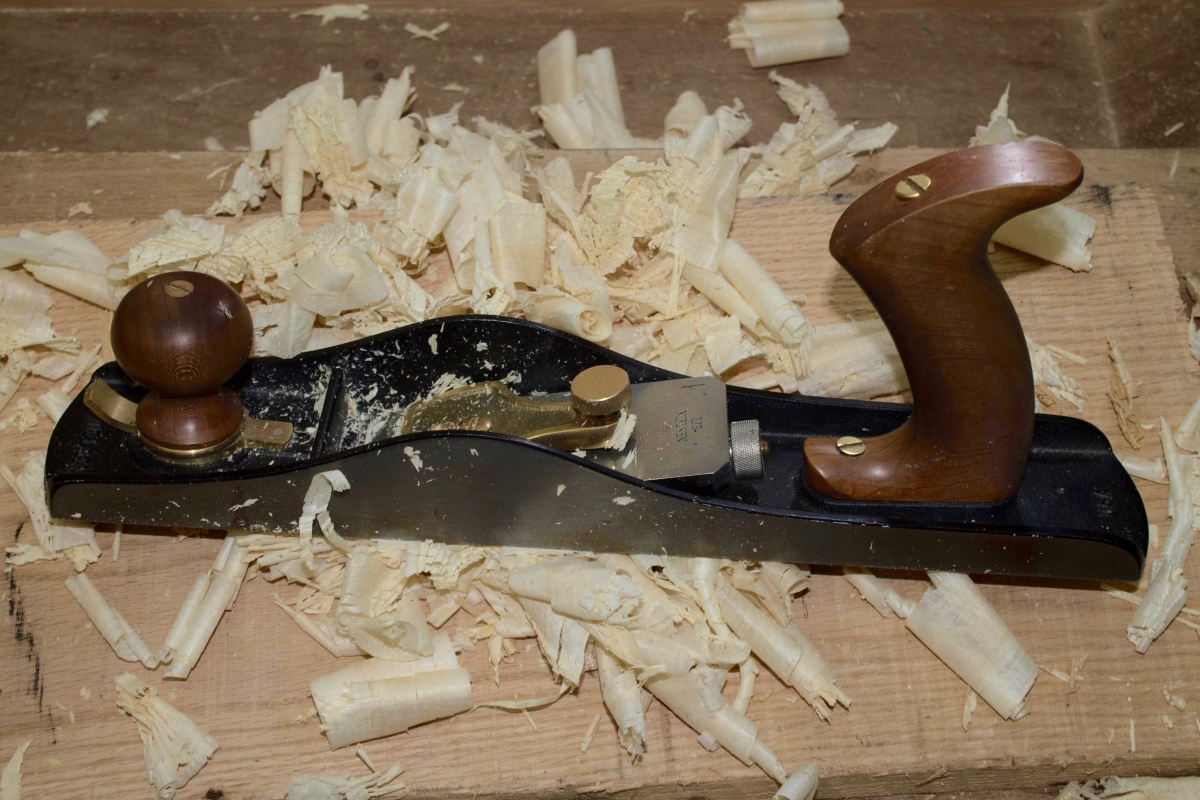
Photo: Avi Schwarzchild
The workhorse of the bench planes, the jack plane is the most general and versatile of all. Its medium length makes it suited to a variety of planing tasks, especially rough removal of wood.
Jointer Plane
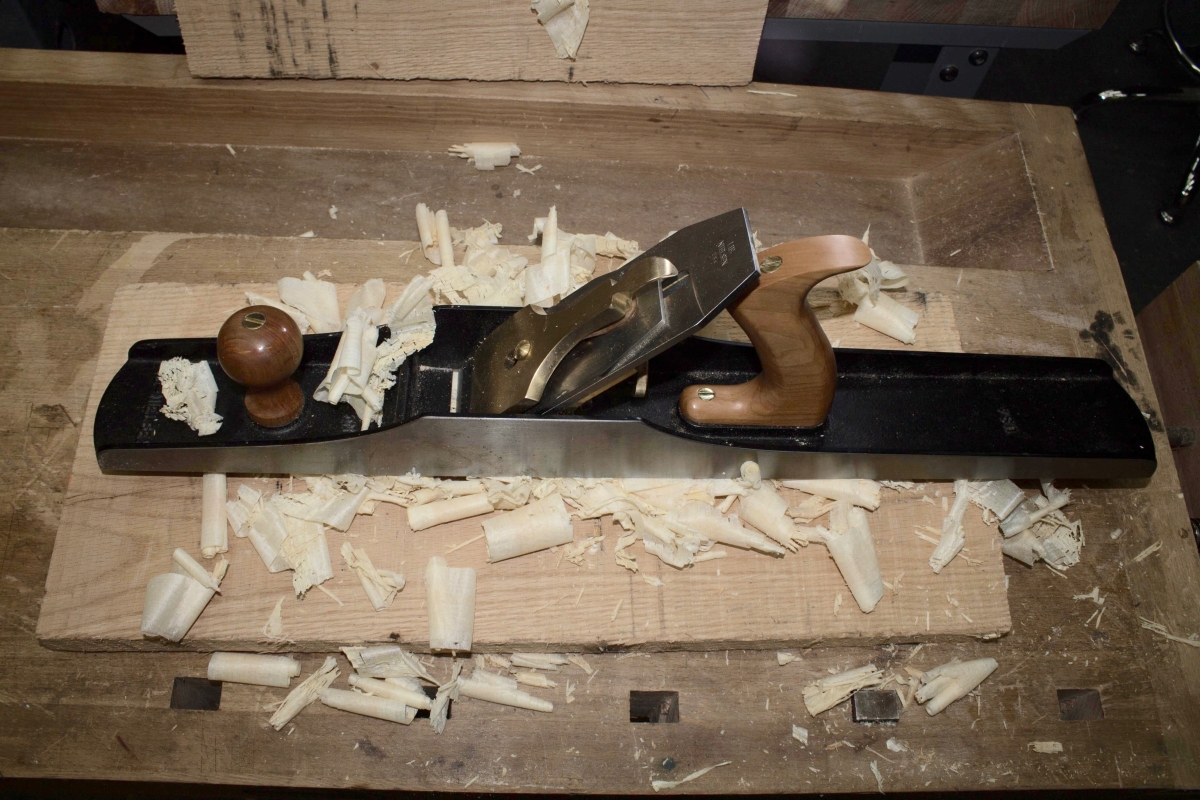
Photo: Avi Schwarzchild
With its long body, the jointer plane is ideal for achieving complete flatness in the second step in the milling process. The joiner plane’s blade is usually set for medium thickness shavings.
Shoulder Plane
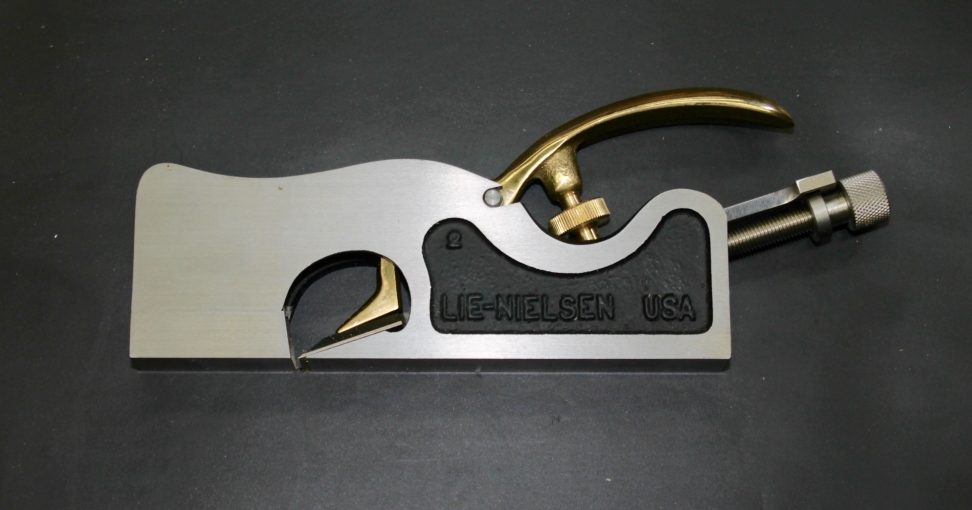
Photo: Avi Schwarzchild
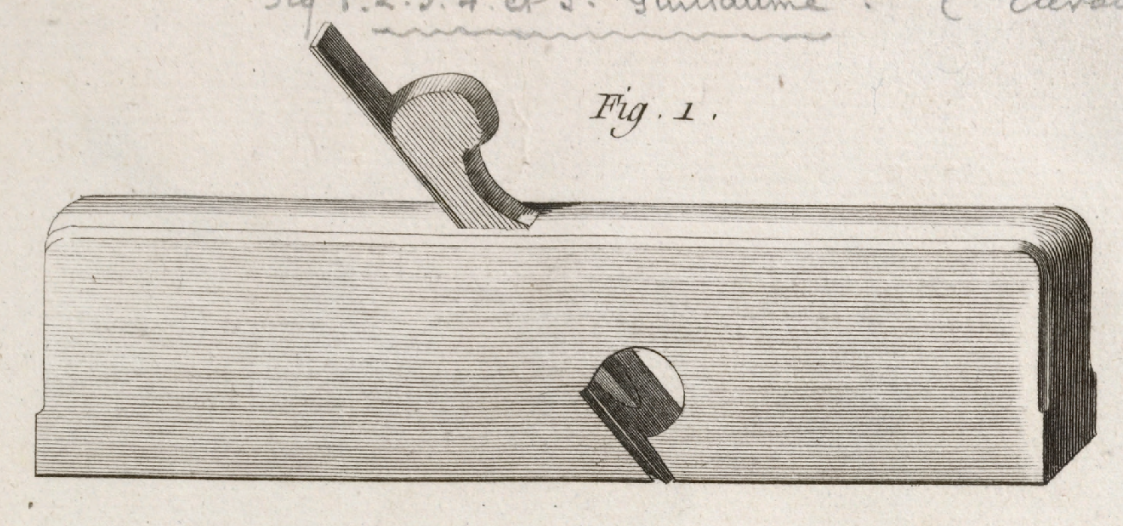
“Plate 17. Outils propres a faires les assemblages et la maniere de s’en servir.” from L’Art du Menuiserie, wtr. Roubo, André Jacob engr. Berthault, Pierre Gabriel. New York Public Library Digital Collections. Accessed December 13, 2016.
Designed for trimming tenon shoulders, the shoulder plane’s blade is slightly wider than the plane’s body, and the blade is left exposed. This allows the shoulder plane to work into a corner and form a perpendicular void.
Smoothing Plane
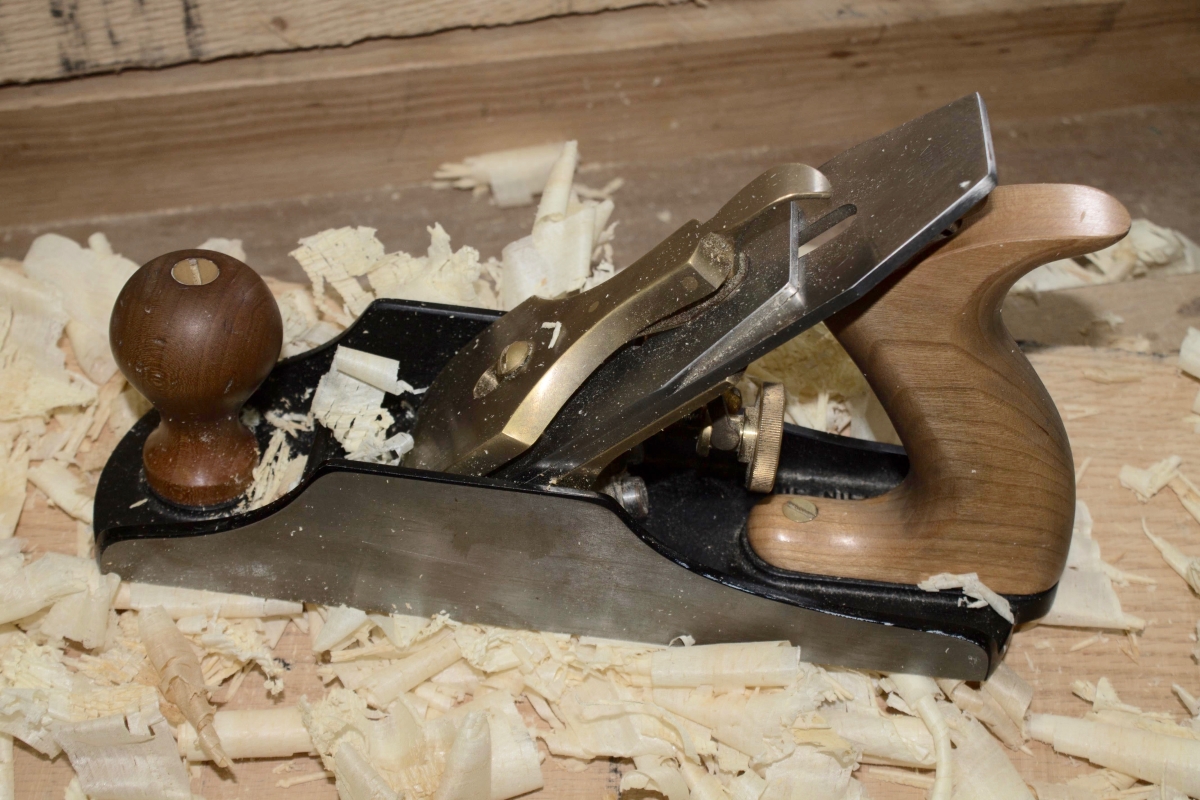
Photo: Avi Schwarzchild
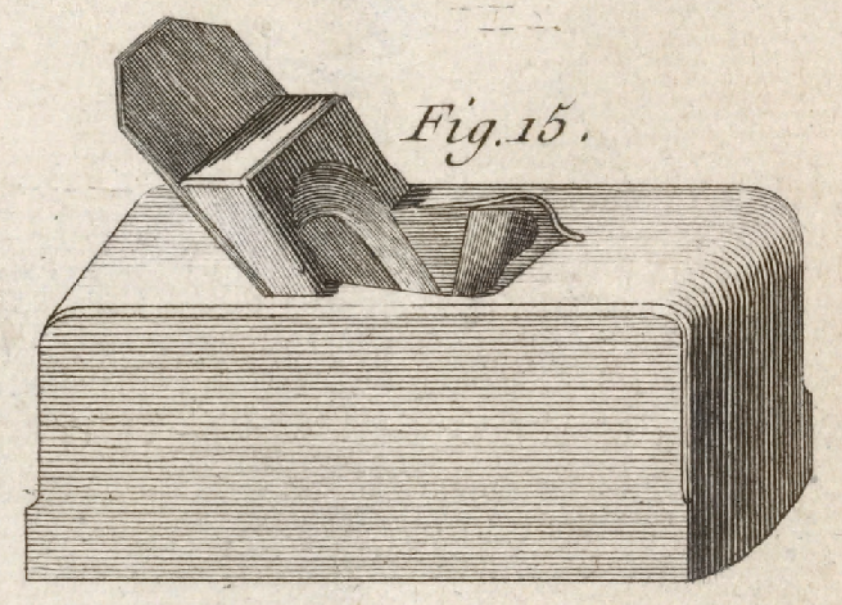
“Plate 14. Outils propres au corroyage du bois et la maniere de s’en servir.” from L’Art du Menuiserie, wtr. Roubo, André Jacob engr. Laurent, Pierre. New York Public Library Digital Collections. Accessed December 13, 2016.
The shortest of the standard bench planes, the smoothing plane removes marks from the previous two planes and produces a mirror-like finish on the wood’s surface. Taking the thinnest shavings, its blade is sharpened with a slight curve (camber) that aids in the smoothing process.